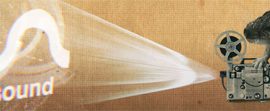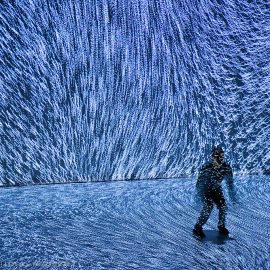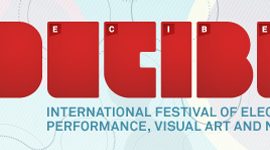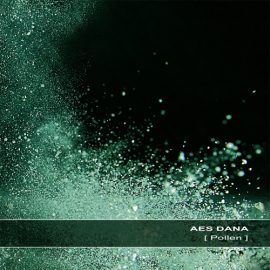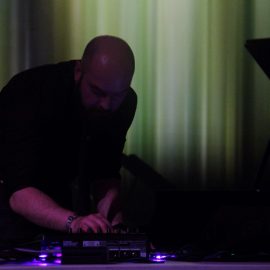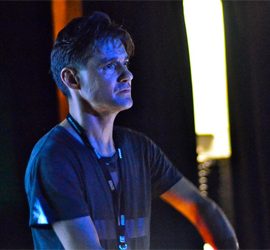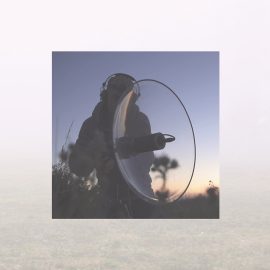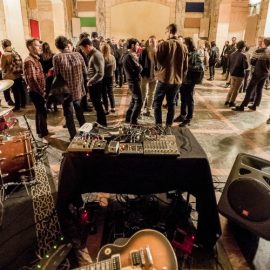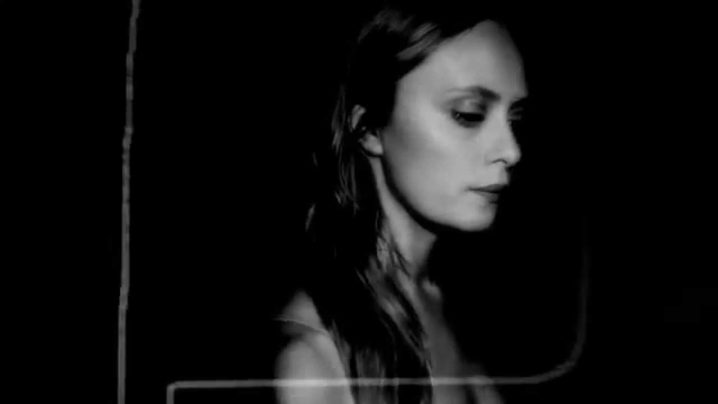
Since the time of the showcase lineup announcement, Friday looked to be the epicenter of not only the festival’s heavy-hitters but the deeper underground of sounds resistant to classification. The quandary involved with the desire to attend multiple locales concurrently was again a defining theme of the night. How does one choose between witnessing the whole of a set of largely improvised digital signal processing by one of the UK’s seminal acts, versus a contemporary femme working in reviving the aesthetics of early harsh noise music? These are the sometimes excruciating conundrums of the festival setting. Particularly when the programming is of the quality seen on Decibel’s third night. Mapping out a course spanning three venues and interlocking time slots, a satisfactory compromise of sorts was found beginning the night at Capitol Hill’s Neumos bar for the Lucid Dream showcase. The lineup described a night of tech and electro on the austere end of the spectrum dominated by the sound of Berlin’s Innervisions label. The imprint is known for having brought Lorenz Brunner’s ascetic, spare electro and acid-informed sound under the Recondite name to a larger audience before the critical acclaim of his releases on Ghostly International. The night’s showcase was a sound where the dancefloor functionality of ancillary subgenres of techno where refashioned to new, more rigorous instrument roles where the fewest elements in play serve the greatest purpose. The first of her two appearances in the festival, the DJ set from Moscow’s Dasha Rush shared little of the burbling synths and analog textures found in her recent output for Raster-Noton. This was instead an exercise that made even the kick drum, reverb and delay ventures of Berlin’s Basic Channel seem luxuriously opulent. A set of implied scale, where when the most integral elements of a hi-hat or half melody did drop, it was a massive, paradigm shift.
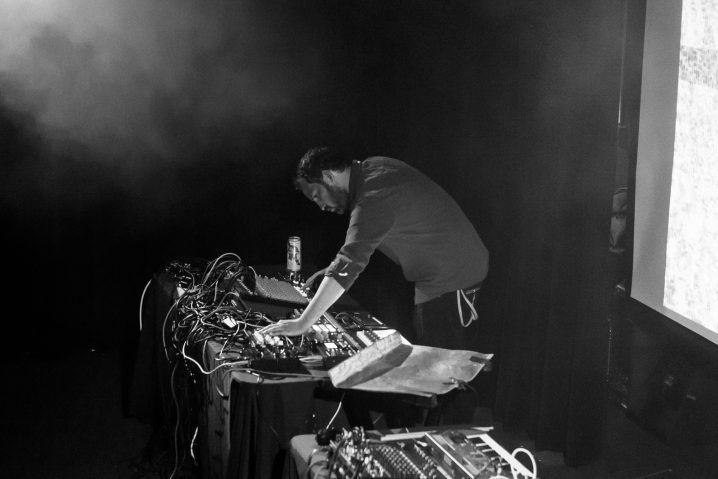
It was established right off that time constraints dictated that the larger part of the showcase for Seattle’s monthly Motor night was going to be missed. Running some three years now in a host of smaller, communal venues Motor has found an ideal companion setting in the DIY-done-right setting of Berlin transplant Austin Stone’s Kremwerk club. Over the span of its brief life the monthly night have brought everything from the harsh noise of Wolf Eyes to the minimal tech dub of Stephan Betke’s Pole, to touring artists from the rosters of John Elliott’s Spectrum Spools and the UK’s cutting edge Tri-Angle label. Their Decibel showcase at The Crocodile produced the most excruciating scheduling conflict of the festival’s five days, with the hypnotic lo-fi techno of Ren Schofield’s Container lost in the shuffle. It also meant that endorphin-pumping live provocation of being at the receiving end of Margaret Chardiet’s Pharmakon project wasn’t part of the night’s thrills. The only window of alignment allowed for the first festival sighting of Guy Brewer, on this occasion in the mode of full-on frenetic hypermath of geometry and pattern work of Shifted. Mapping out the different conceptual objectives of his various aliases, the only constant is a fixation with repetition and counterpoint. Shifted being the most pure and rigorous application of this practice. The combined effect of the epilepsy flirting strobe of the video feedback work by Seattle’s Coldbrew Collective and their Opti-glitch video synthesis setup, with Brewer’s maddening repetitive jackbeats generated a disorienting whole. Once locked in, the cycles of pattern and fulfillment were an addictive perceptual trance state.
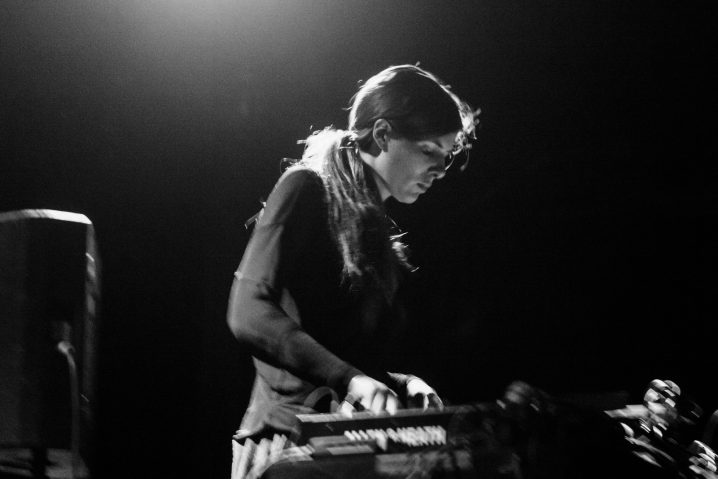
The massive PA and wattage on offer at The Showbox beckoned again, particularly the prospect of hearing the airy spacial framing surrounding the bass drops, pointillist melodies and implosive clap of Laurel Halo‘s undeniably original dialect. Though hailing from Ann Arbor Michigan, her self-described “techno as a meditative force that can process darkness and aid in removing obstacles“, has been released on Steve Goodman’s genre-reinventing Hyperdub label. Though largely known as the home to Burial and Kode9 as early progenitors of the UK Bass sound, the label’s evolution has seen it embrace everything from the Chicago footwork of DJ Rashad, Zomby‘s jungle retrostep and the galaxial dub of Kevin Martin’s King Midas Sound. Though referencing the label’s shared interest in the dominating force of bass and music as an encompassing physical event, Halo’s concerns have a greater finesse in their mode of expression. Not to say there isn’t massive low-end collateral on the dancefloor when she brings out tracks from 2013’s Chance of Rain, but this is tempered with suggestively melodic ornamentation. A sensory engaging set full of breath and flitting details suspended in its mass of low-end bodily hits, ears were more than primed for what was to follow. The Skam label’s Rob Hall was on hand for the tour’s between set selections, spinning a mix of farthest fringe IDM and underground electro, in the midst of his mix audience members could be heard positing “will we even know when Autechre starts?“.
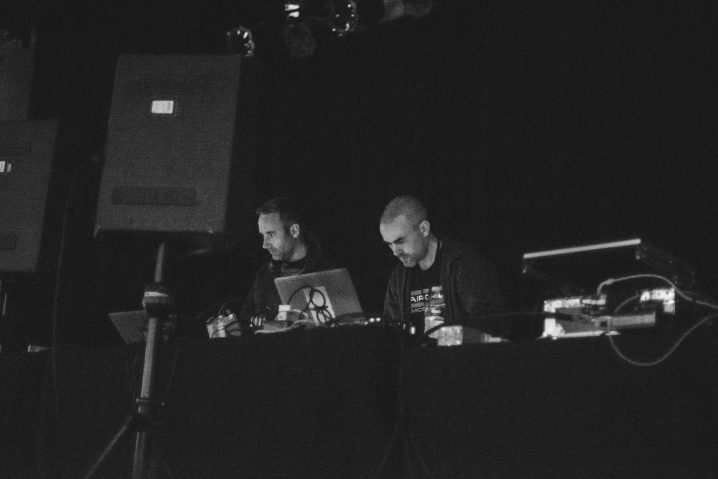
In as much pure darkness as American club safety laws will allow for, the answer came with a building shuddering wallop. Autechre’s long-established obfuscation of the performer, hunkered down behind the stage monitors, enshrouded in darkness with no visual accompaniment whatsoever, speaks to their belief in sound as a complete, wholly enveloping event unto itself. Possibly more than any other artist or composer to emerge from the early 1990s renaissance of post-dancefloor electronic music, Autechre have stayed a course that’s taken them beyond the setting of their Warp Records peers. Where even Richard D. James found a millennial destination at the intersection of IDM’s studdering beats, a library of analog synths and a love of classical modernism’s retooling of the piano, Sean Booth and Rob Brown have yet to reveal the endpoint of their extended arc. By offering a glimpse into its future, their expectation confounding, wildly elated, dourly oppressive, kaleidoscopically rhythmic and rapturously beautiful live incarnation has garnered an equally paradox-loaded, almost mythical status among fans. In a recent interview for the Boston Globe they spoke of their fashioning of the performance to fit its setting, retooling both individual sounds and frequency spectrum as well as larger structural elements in relationship to the space. From the hallucinogenic apparition heard that night, one could speculate that the high domed ceilings and deco columns of the Showbox were an inspiration. Working outside the propulsive rhythmic mode of their North American tours of 2005 and 2008, they manifest a shifting, chimerical three-dimensional sound object suspended in a hyper-delineated stereo field. Less a performance of music broadcast to a receiving body, the listener was instead located within the framework of a exertive, dynamic, ever-changing aural-kinetic sculpture. Their own Gantz Graf video with Alex Rutterford being the closest equivalent to a descriptor of being placed within the field of this immaterial mid-air mobile. Amid this pulsing, endlessly detailed structure of shifting vantages, tunneling depths, disorienting pacing and bewildering spacial geometry, one had to wonder; could anyone other than Booth/Brown have conceived and executed such a thing? At the beginning of this year’s Decibel coverage I noted the inclusion of a few unequivocal not-of-this-earth experiences had over the festival’s duration. Autechre were just that, the visitation of an unmitigated sensory event from a world all their own.
Words by Jefferson Petrey for Headphone Commute
